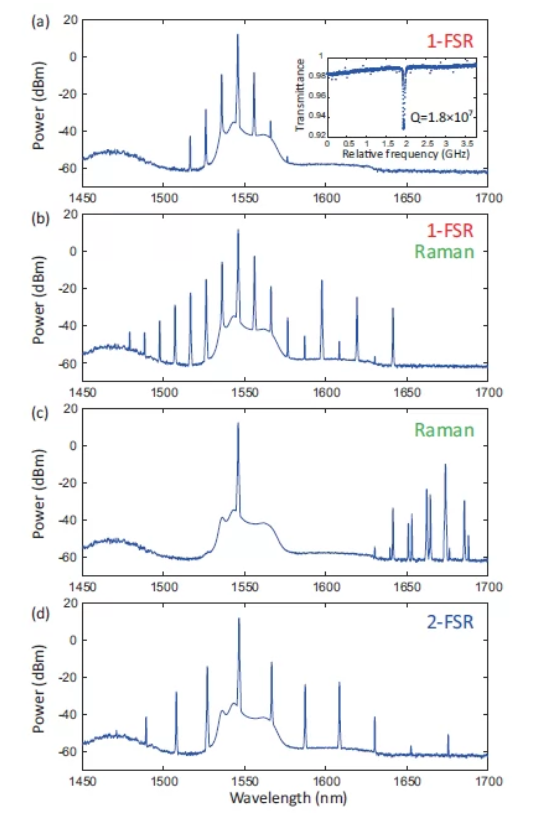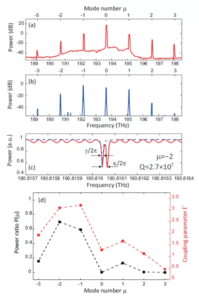Gain Competition between Optical Kercomb and Induced Raman Scattering in Silica Microcavities
Research
Gain Competition between Optical Kercomb and Induced Raman Scattering in Silica Microcavities
New insights into the behavior of four-wave mixing and induced Raman scattering
Four-wave mixing and induced Raman scattering are a type of third-order nonlinear optical effect that is often observed in micro optical resonators, where the light density per unit volume increases. They can be thought of as "the process of generating light at a new wavelength" under the condition that the energy conservation law is satisfied. Induced Raman scattering is a phenomenon in which new wavelengths of light are generated by resonance (scattering) between pump light and the intrinsic molecular vibration of a material. Silica glass, the material of the resonator used in this research, is known to have Raman gain over a very wide wavelength range, which means that light of various wavelengths can be generated. On the other hand, four-wave mixing is a phenomenon in which two new photons of different wavelengths are generated when a pump light of a single wavelength is input. Since the light generated in this way is monochromatic and highly directional, it is expected to be used as an optical frequency comb light source that operates on a chip scale.
In this study, we theoretically predicted and experimentally observed the gain competition between four-wave mixing and induced Raman scattering that occurs in silica microcavities. As mentioned earlier, four-wave mixing and induced Raman scattering are completely different physical phenomena, but since both are generated from the same pump light, the question remained as to which is the dominant and preferential source. The key to the solution was the analysis of "gain. By comparing the ease of generation (=gain) of four-wave mixing and induced Raman scattering using theoretical analysis, we discovered that there are conditions under which four-wave mixing and induced Raman scattering can be selectively obtained.
The following figures show the experimental results of dynamic state changes in 1-FSR (mode next to the pump), induced Raman scattering, and 2-FSR (mode next to the pump) by fine tuning the laser wavelength. The results are in good agreement with simulation results, and reveal a mechanism that has been observed but not deeply understood. These results are expected to provide important knowledge for future applications of optical Kercomb and Raman lasers.

Figure 1: (a) Four-wave mixing occurs in 1-FSR. (Stage 1) (b) Competition between 1-FSR comb and induced Raman scattering. (Stage 2)
(c) State in which induced Raman scattering dominates. (Stage 3) (d) State in which four-wave mixing occurs in 2-FSR. (Stage 4)
- Categories
- 研究トピックス



